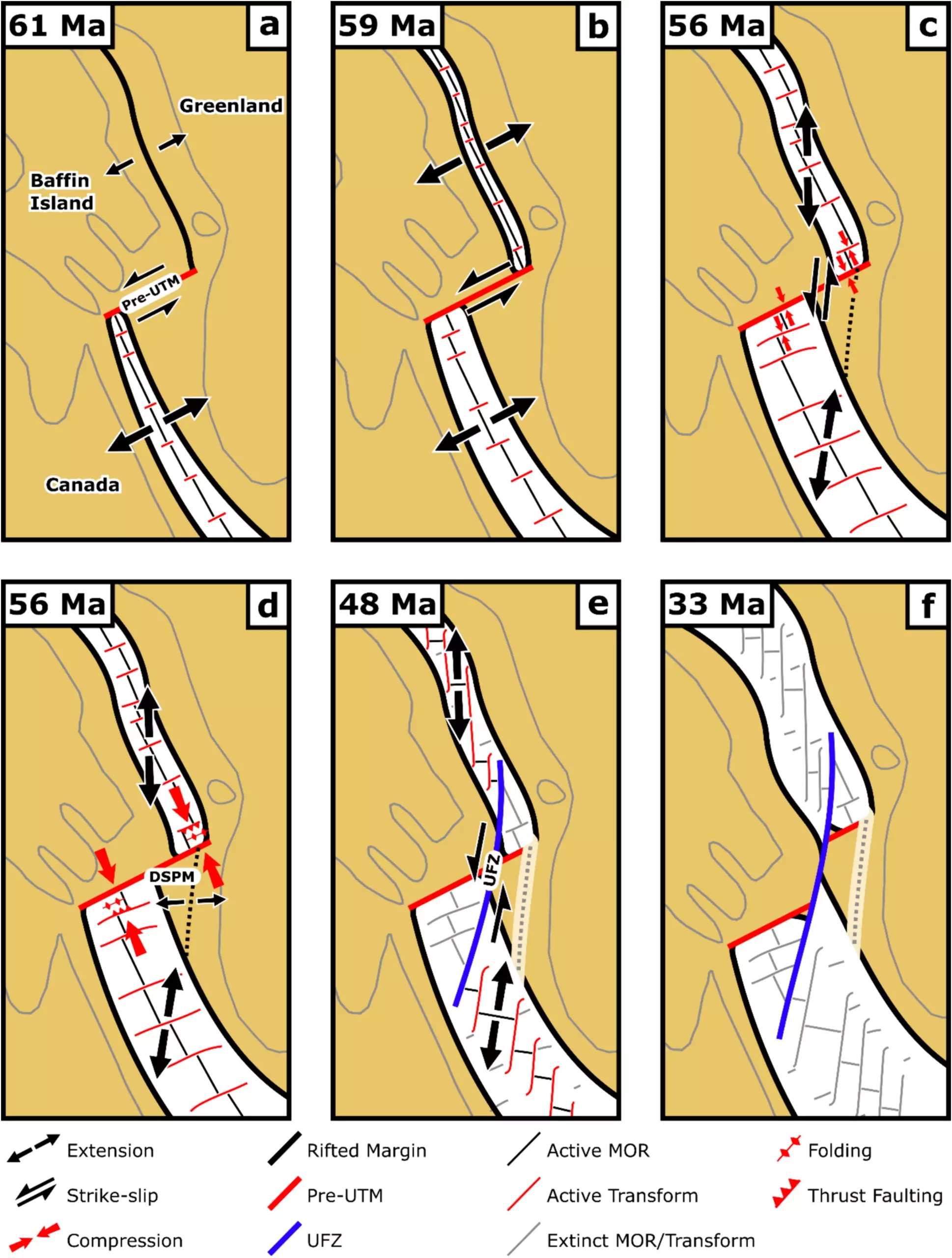Plate tectonics play a crucial role in shaping the Earth’s surface, with the movement of lithospheric plates resulting in various geological phenomena such as earthquakes, volcanic eruptions, and mountain formations. One of the interesting plate boundaries where these processes are evident is the Davis Strait between Canada and Greenland, a region that has formed a seaway connecting the Labrador Sea and Baffin Bay. The tectonic evolution of the Davis Strait dates back to millions of years ago, during which a unique feature known as the Davis Strait proto-microcontinent was formed. Recent research published in Gondwana Research delves into the mechanism behind this crustal anomaly and sheds light on the process of microcontinent formation.
The research conducted by Doctoral researcher Luke Longley, Dr. Jordan Phethean, and Dr. Christian Schiffer involved analyzing plate tectonic movements spanning approximately 30 million years that led to the formation of the proto-microcontinent. By utilizing gravity and seismic reflection data maps, the research team identified faults related to rifting, the mid-ocean ridge where Greenland rifted from the North American plate, and transform faults where tectonic plates slide past each other. The study revealed that initial rifting between Canada and Greenland began around 118 million years ago during the Lower Cretaceous period, with seafloor spreading initiating in the Labrador Sea and Baffin Bay around 61 million years ago.
The period between 49-58 million years ago was identified as crucial in the formation of the Davis Strait proto-microcontinent. During this time, the orientation of seafloor spreading between Canada and Greenland shifted, leading to the rifting off of the Davis Strait proto-microcontinent from the mainland. By around 33 million years ago, ocean floor spreading ceased as Greenland collided with Ellesmere Island, resulting in Greenland joining the North American plate. The Davis Strait proto-microcontinent was distinguished by its thicker than normal continental crust, ranging from 19-24 km, which was surrounded by narrower bands of thinner continental crust separating it from mainland Greenland and Baffin Island.
Implications and Future Research
The study of the Davis Strait proto-microcontinent provides valuable insights into the process of microcontinent formation and the role of plate tectonics in shaping the Earth’s crust. By understanding the mechanism behind the formation of such geological anomalies, researchers aim to predict future microcontinent separations and evolution. The findings of this research have broader applicability to other microcontinents globally, such as the Jan Mayen microcontinent northeast of Iceland, the East Tasman Rise southeast of Tasmania, and the Gulden Draak Knoll offshore western Australia.
The study of the Davis Strait proto-microcontinent highlights the intricate interplay between plate tectonics, rifting processes, and crustal formation. By unraveling the geological history of this region, researchers pave the way for a better understanding of how microcontinents evolve and separate from continental crust. This research not only expands our knowledge of Earth’s geological processes but also enhances our ability to predict and interpret future tectonic events.


Leave a Reply